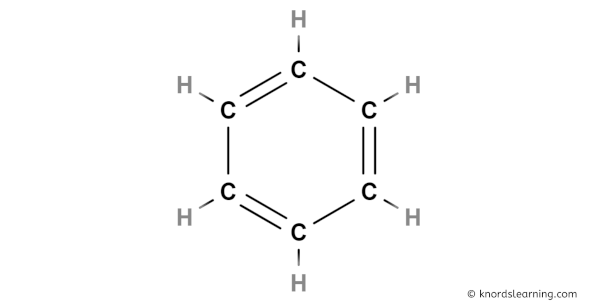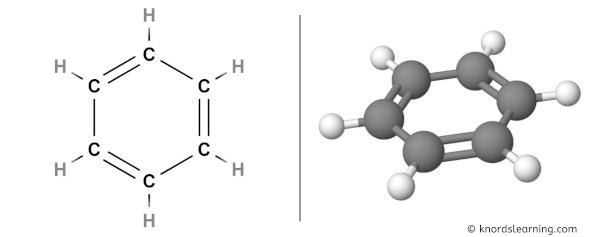
Benzene (or C6H6) is a NONPOLAR molecule.
But why?
And how can you say that benzene is a nonpolar molecule?
Want to know the reason?
Let’s dive into it!
Benzene (or C6H6) is a NONPOLAR molecule because all the individual bonds are nonpolar and C6H6 has symmetrical geometry.
In other words, the electronegativity difference of these bonds is very less. Hence the C6H6 molecule is a nonpolar molecule.
Let me explain this in detail with the help of C6H6 lewis structure and its 3D geometry.
Why is C6H6 a Nonpolar molecule? (Explained in 2 Steps)
C6H6 is a nonpolar molecule because it does not have any pole of positive charge and negative charge on it.
Let me explain this to you in just 2 steps!
Step #1: Draw the lewis structure
Here is a skeleton of C6H6 lewis structure and it contains Carbon-Carbon bonds and Carbon-Hydrogen bonds.

Now in the next step we have to check whether these bonds are polar or nonpolar.
And we also have to check the molecular geometry of C6H6.
Step #2: Check the bond polarity and molecular geometry
The chemical bonds can be either nonpolar, polar or ionic depending on the difference of the electronegativity values (ΔEN) between the two atoms.

Have a look at the above image.
- If the electronegativity difference (ΔEN) is less than 0.4, then the bond is nonpolar covalent bond.
- If the electronegativity difference (ΔEN) is between 0.4 to 1.7, then the bond is polar covalent bond.
- If the electronegativity difference (ΔEN) is greater than 1.7, then the bond is an ionic bond. [1] [2] [3] [4]
Now let’s come to the example of C6H6 molecule. It has Carbon-Carbon bonds as well as Carbon-Hydrogen bonds.
You can see the electronegativity values of Carbon (C) and Hydrogen (H) atoms from the periodic table given below.

From the above image;
Now let’s see the polarity of each bond.
For Carbon-Carbon bond;
The electronegativity difference (ΔEN) = 2.55 – 2.55 = 0
This value is less than 0.4, which indicates that the C=C is nonpolar.
Hence, the C=C bond is a nonpolar covalent bond.
For Carbon-Hydrogen bond;
The electronegativity difference (ΔEN) = 2.55 – 2.2 = 0.35
This value is less than 0.4, which indicates that the bond between Carbon (C) and Hydrogen (H) is nonpolar.
Hence, each Carbon-Hydrogen bond is a nonpolar covalent bond.
As Carbon-Carbon bonds and Carbon-Hydrogen bonds are nonpolar, there will not be any partial positive charge (ẟ+) or partial negative charge (ẟ-) on the carbon and hydrogen atoms.
From this, you can easily get the idea that the C6H6 molecule is a nonpolar molecule.
But let’s also see whether this C6H6 molecule has a symmetric geometry or not.

Have a look at this 3D structure of C6H6. You can see that the structure of C6H6 is symmetrical.
As all the bonds are nonpolar and the C6H6 molecule has a symmetrical geometry, there are no positive and negative poles of charges on the overall molecule of C6H6.
Hence, the C6H6 molecule is a nonpolar molecule.
I hope you have understood the reason behind the nonpolar nature of C6H6 (or benzene) molecule.
See the polarity of other molecules to make your concepts clear:
Is SiH4 Polar or Nonpolar?
Is Toluene (C6H5CH3) Polar or Nonpolar?
Is PBr5 Polar or Nonpolar?
Is SiO2 Polar or Nonpolar?
Is SBr2 Polar or Nonpolar?
Jay is an educator and has helped more than 100,000 students in their studies by providing simple and easy explanations on different science-related topics. With a desire to make learning accessible for everyone, he founded Knords Learning, an online learning platform that provides students with easily understandable explanations.
Read more about our Editorial process.
